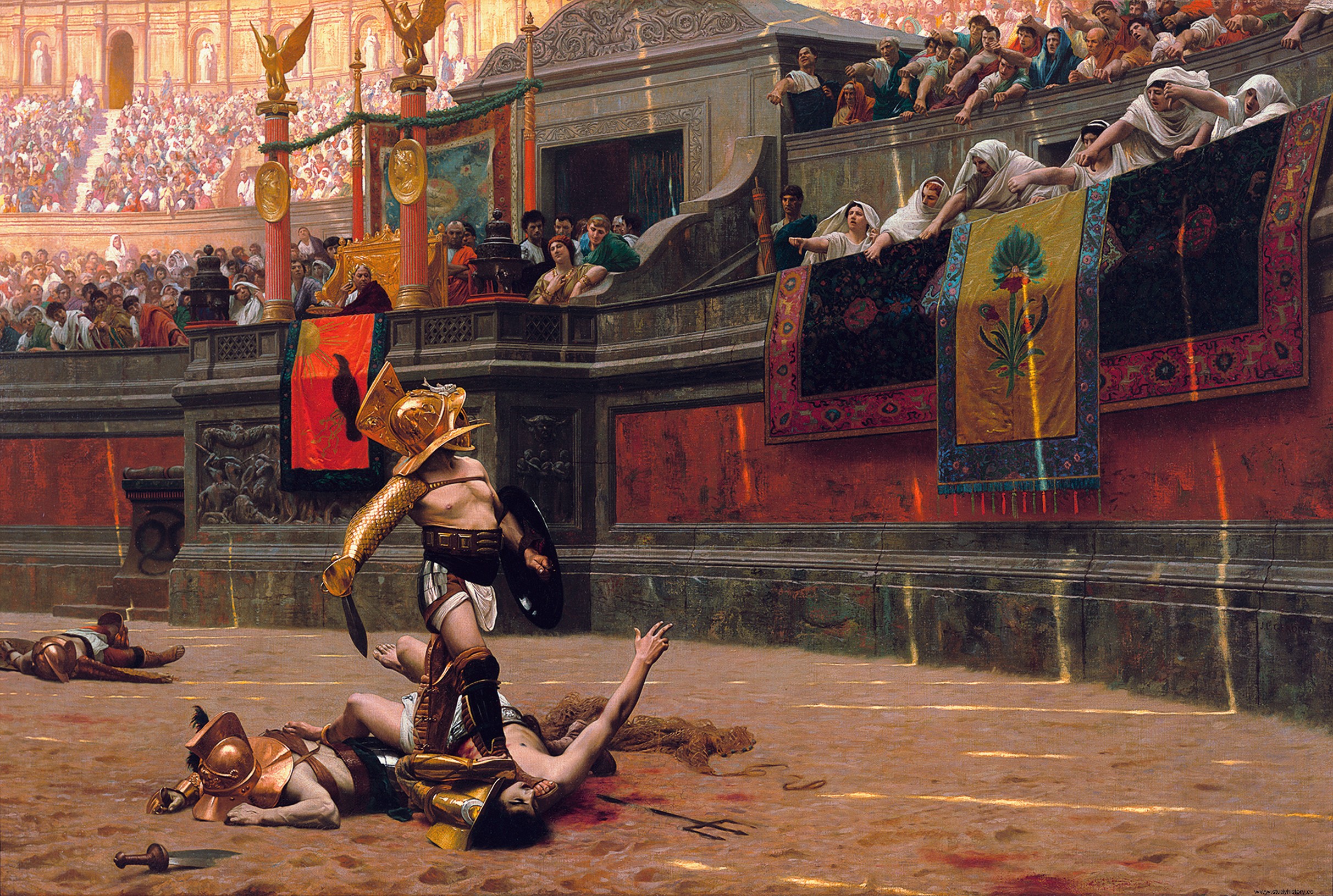The painting in question is the oil painting «Pollice Verso » (1872) by the French painter Jean-Léon Gérôme . First of all, I would like to admit that it is a spectacular painting but one that was misinterpreted.
It represents the scene of an amphitheater in which a gladiator awaits the emperor's decision:death or life of the fallen gladiator. The people, thirsty for blood, stick out their fists and extend their thumbs –pollice verso , thumb turned-. The interpretation made of the painting is that this gesture meant death. This erroneous interpretation has served so that in the “Rome films or series” the thumbs down gesture means “death”. Even Ridley Scott acknowledged that he had this painting in mind when he directed Gladiator …

Pollice Verso
The reality is very different:the gesture that meant death it was with the thumb up under the throat, to cut the throat, and the gesture that means life it was with the thumb hidden (pollice compresso favor iudicabatur , forgiveness is indicated with the compressed thumb) or with the thumb down representing the sword stuck in the sand. The fallen gladiator begged for mercy by holding out two fingers (as depicted in the painting).
And leaving aside the emperor and the gladiators, why has the thumbs up as a sign of approval survived to this day?
It would be Christianity that would turn the tables:the thumbs up pointing to heaven indicated good or salvation and the thumbs down pointing to hell showed evil or death.
So, as my father says, less TV and more reading.
Source:The Inventions of the Ancients
